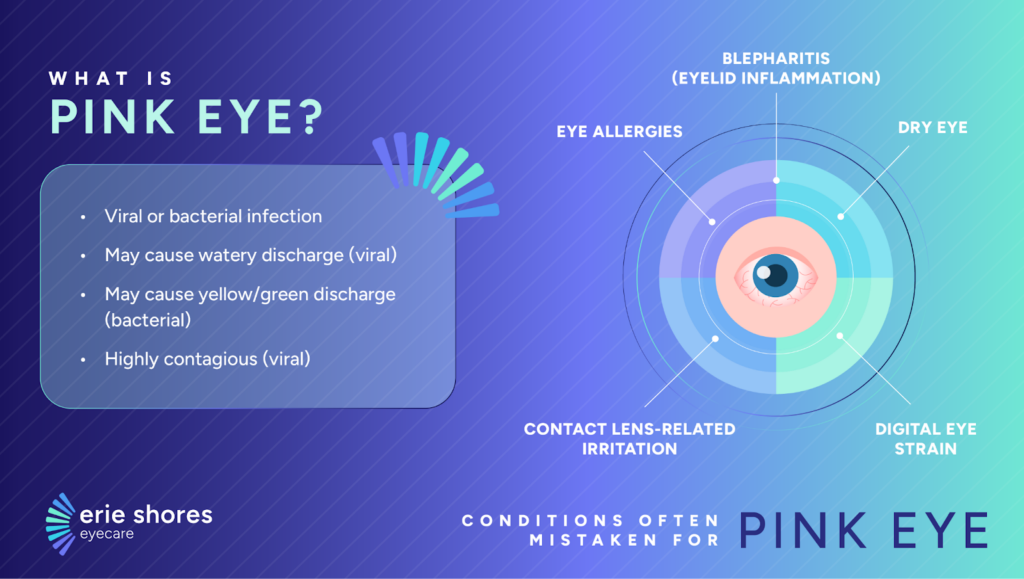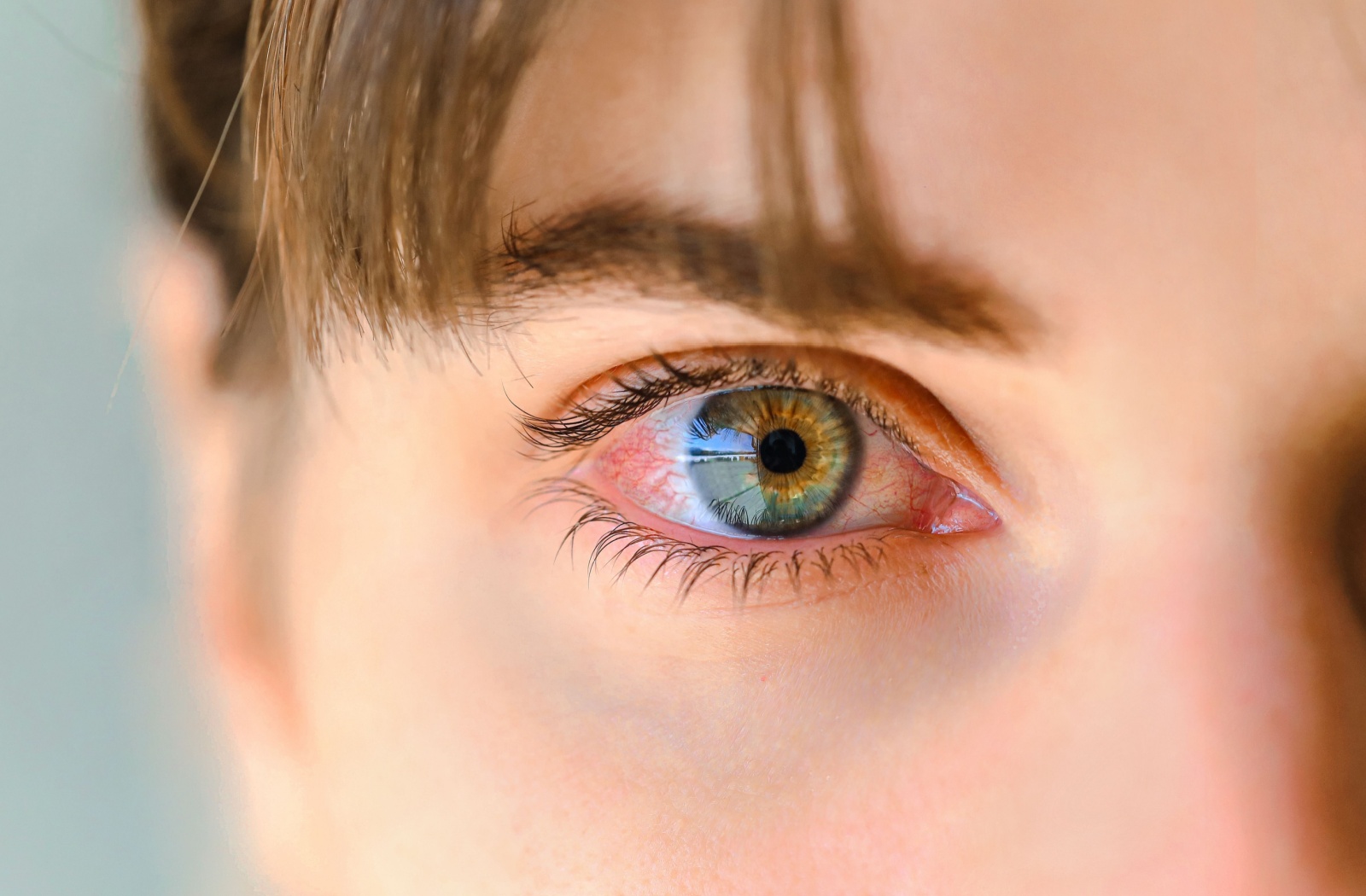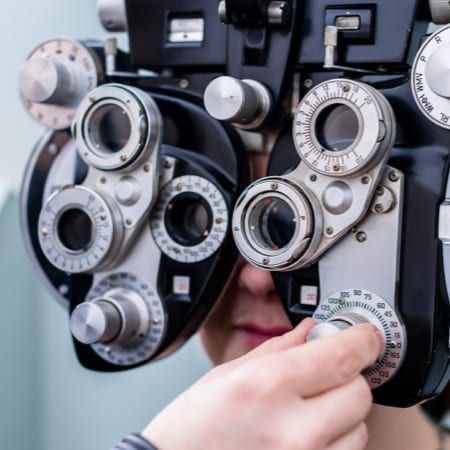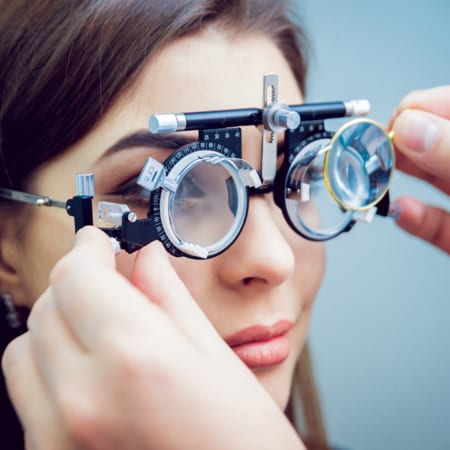Conjunctivitis, commonly referred to as pink eye, is a prevalent eye condition. The red appearance of pink eye is caused by inflammation and redness of the sclera’s inner lining—the clear membrane that covers the white part of your eye—and the eyelids. However, the root cause of pink eye is usually a bacterial or viral infection in these parts of the eye.
Sometimes, other conditions can be misdiagnosed as pink eye, including:
- Eye allergies
- Dry eye
- Blepharitis
- Contact-lens-related irritation
- Digital eye strain
- Subconjunctival hemorrhage (broken blood vessels in the eye)

Viral vs. Bacterial Conjunctivitis
Adults are most often affected by viral conjunctivitis, which is characterized by redness, a gritty or burning sensation, and watery discharge. Symptoms tend to last between 1 and 2 weeks, and people can spread the infection for the entire time.
In contrast, bacterial conjunctivitis is more common among children. It typically manifests as redness, yellow/green mucus discharge, and sticky eyelids/lashes upon waking. This infection usually responds to topical antibiotic drops prescribed by your optometrist.
Prevention & Treatment Practices
Preventing pink eye can be as straightforward as practicing good hygiene and avoiding contact with the virus or bacteria that can cause it. Simple steps include washing your hands regularly, refraining from sharing personal items, and disinfecting commonly touched surfaces.
Treatment options for pink eye vary, including:
- Antibiotic eye drops or ointments for bacterial conjunctivitis
- Antihistamine eye drops for allergic conjunctivitis
- Artificial tears for comfort
- Cold compresses to help with swelling
Pinpointing Pink Eye: Related Conditions Often Misdiagnosed
Certain conditions can mirror pink-eye symptoms, which can lead to misdiagnosis. With a bit more information, your optometrist can decode what’s causing your eye redness and provide the right treatment.
Eye Allergies
Allergic conjunctivitis occurs when the eyes are exposed to allergens such as pollen, dust mites, pet dander, or mold. Symptoms typically include redness, itching, excessive tearing, and mild swelling of the conjunctiva.
Unlike viral or bacterial conjunctivitis, allergic conjunctivitis is not contagious and often occurs seasonally, corresponding to triggers like springtime pollen.
Management generally involves avoiding allergens, using artificial tears to soothe irritation, and applying cold compresses. Over-the-counter or prescription antihistamine eye drops often provide effective relief for more severe cases.
Dry Eye
Dry eye might be mistaken for conjunctivitis due to its shared symptom of eye redness. This condition arises when the eyes do not produce enough tears or when the tear film is of poor quality, leading to dryness, irritation, a gritty sensation, and sensitivity to light.
Environmental factors like wind or prolonged screen time can exacerbate symptoms. Treatment may involve artificial tear drops, lifestyle modifications, or prescribed medications to address inflammation and improve tear production.
Blepharitis
Blepharitis refers to the inflammation of the eyelids, often mistaken for conjunctivitis due to accompanying redness or discomfort. This condition is caused by an overgrowth of bacteria on the eyelid margins, clogged oil glands, or skin conditions like rosacea or dandruff.
Symptoms include:
- Redness
- Swelling
- Crusting along the eyelid edges
- Burning sensations.
Proper eyelid hygiene, including regular cleaning of the eyelid margins with mild cleansers, is crucial for managing blepharitis. Severe cases may require topical antibiotics or other prescribed medication.

Contact-Lens-Related Irritation
Improper contact lens use can lead to eye irritation or infection, mimicking the symptoms of conjunctivitis. Overwearing lenses, poor cleaning routines, or debris trapped under a lens can cause redness, discomfort, and excessive tearing.
Practicing proper lens hygiene, following recommended wearing schedules, and replacing lenses as advised by your eye doctor are essential for preventing contact lens-related issues.
Digital Eye Strain
Digital eye strain, also known as computer vision syndrome, is another condition that is sometimes mistaken for pink eye due to overlapping symptoms. Digital eye strain can cause redness, dryness, irritation, and fatigue—symptoms that can mimic those of conjunctivitis.
However, unlike pink eye, digital eye strain is not caused by an infection and is instead linked to prolonged use of digital devices such as computers, smartphones, and tablets. Usually, digital eye strain will subside after taking a break from screen time.
Subconjunctival Hemorrhage
A subconjunctival hemorrhage occurs when small blood vessels under the conjunctiva break, leading to a bright red patch in the white part of the eye. While visually alarming, this condition is typically harmless and should not cause pain or affect vision.
Common causes include coughing, sneezing, or minor trauma to the eye. Subconjunctival hemorrhages often resolve on their own within 1–2 weeks, and no specific treatment is usually required unless there is associated discomfort or underlying health concerns.
Get Relief for Red, Irritated Eyes at Erie Shores Eyecare
Many conditions can be misrepresented as pink eye, and accurate diagnosis is vital to get the correct treatment and avoid unnecessary complications. Whether you’re dealing with conjunctivitis, dry eye, or digital eye strain, there are treatments that can help.
At Erie Shores Eyecare, we prioritize comprehensive eye care services and accurate diagnoses for all our patients. If you suspect you may have pink eye or any eye-related symptoms, don’t hesitate to book an appointment with us.

















